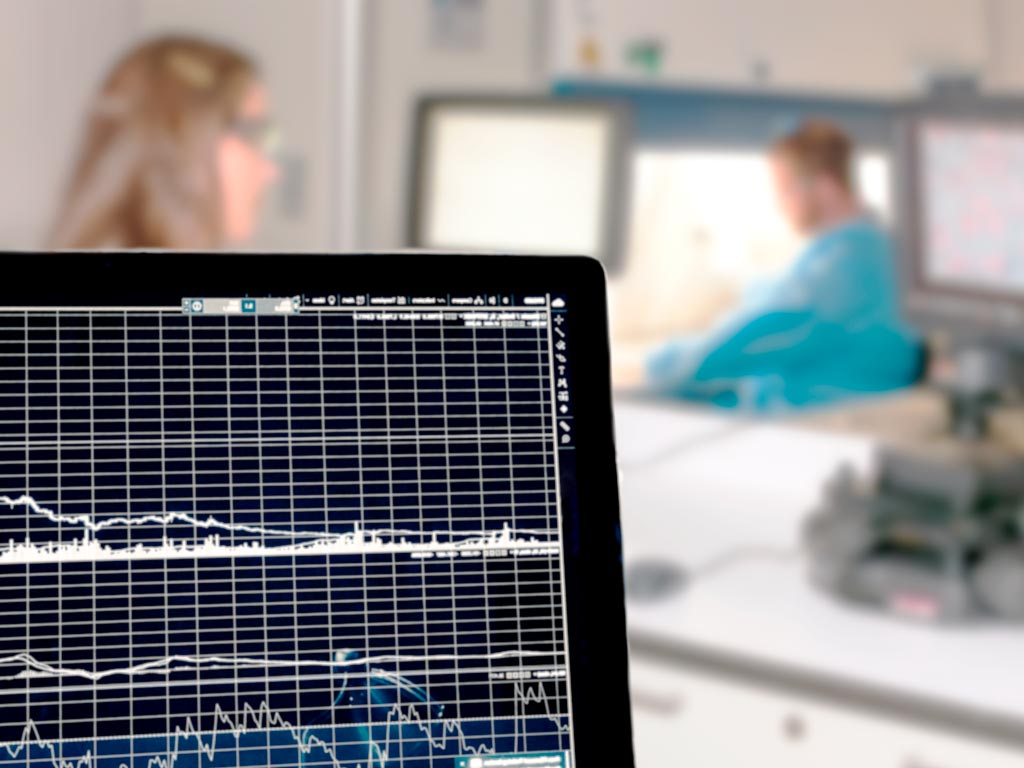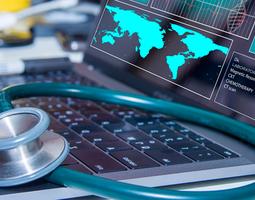There has been much praise regarding digital technologies and their impact on all areas of life. The new ways of handling information using computer equipment have completely revolutionized many industries that have existed since ancient times, like education or healthcare. Changing the conventional “pen-and-paper” format of information into the digital one requires tremendous hardware capacities for data processing and storage, as well as some cutting-edge recognition solutions that involve natural language processing and other advanced technologies. However, these efforts enabled many incredible opportunities for data analysis, gathering, and management. As one illustrative example, let us review the importance of data mining in the healthcare industry.
What is data mining in healthcare
Whether we like it or not, the healthcare industry is a business with all the relevant demands, features, and goals. To remain profitable and competitive, patient care providers readily adopt many useful technological advances. Perhaps the most beneficial of them in the context of healthcare services is data mining.
Medical data mining refers to the wide range of activities aimed at collecting and maintaining large databases containing all types of medical information, as well as finding patterns in discovered information. Most commonly, such information comprises electronic health records, results of drug trials, lists of pharmaceutical products available on the market, and other data. Data mining is closely connected with Machine Learning, Artificial Intelligence, and Big Data technologies that involve processing, analyzing, storing, and protecting large volumes of gathered information.
Benefits of data mining in healthcare
The use of data mining in the medical field is becoming more and more extensive due to the invaluable advantages it provides. The most notable examples of these advantages are described below.

Diagnosis accuracy increase
Having large amounts of historical data gives healthcare institutions the ability to assist their doctors with diagnosis in complicated cases. Of course, a “machine” should not replace doctors, but they can complete each other. For example, if a doctor studies a patient’s social network page and reads comments to find the source or early signs of an illness, it may be considered as unethical behavior or a conflict of interests. However, nobody really cares when a data mining solution does exactly the same. If a patient ever complained about feeling bad and specified what exactly hurt, the software can add this information to the patient’s history.
More effective treatment
Data mining can have a significant impact on the quality of treatment by giving doctors the additional information on patients’ genetic heritage, previous cases of sickness or disease, shifts in activity and lifestyle, and a lot more. Such information may be categorized and stored in specially designed customer relationship management systems. Also, if a healthcare institution has legal access to certain databases that store data on previous treatment of a patient, the system can give doctors accurate information on which medications worked and which ones failed or made a person feel even worse.
Enhanced fraud detection
There will always be people who want to get prescription drugs without needing them, and data mining can be the tool for effective fraud prevention. All analytical and machine learning systems designed to detect fraudulent activity are completely useless without significant amounts of data. Thus, by having enough information on a new or returning patient, the software can tell a doctor whether a person truly needs a drug or tries getting it illegally. Thanks to such initiatives as the Healthcare Fraud Prevention Partnership (HFPP), doctors hope to reduce the number of fraudulent cases and give help only to those who really need it.
Access to predictive analytics
The COVID-19 pandemic is a vivid example of how important predictive analytics can be for the healthcare industry and the entire humanity. Data mining is the first stage of getting good-quality predictive software. Without significant amounts of information, there will be nothing to cluster and analyze in order to get predictive statistics on a certain topic for a certain period of time.
In fact, information on epidemics, ecology, and more can be taken from trusted open sources from around the world like news, scientific journals, official reports, etc. That means that, in addition to the national database of electronic health records, there is a need for other extensive data sets with supplementary information to get a full picture of the current state of citizens’ health and the healthcare system within a country. For example, a high-quality system that uses mined information can predict the percentage of cancer patients that will be in 2 years from now, and if it increases, a medical institution can start producing and testing new drugs, train more staff, consult with various healthcare organizations, etc.
Better resource and management optimization
Data mining and analytics go side by side, and a system that has plenty of information for analysis can significantly improve resource management of any healthcare institution. For example, a system can give advice on purchasing special equipment, hiring more doctors and medical staff of certain specialties.
Also, the system can tell which drugs and medical procedures prove to be ineffective and can be replaced or removed with more effective ones. Pharmaceutical producers can use data mining applications to adjust and improve their medication or equipment development, test trials, and see what products and services will be the most demanded in the near and distant future.
Drug quality assessment
When a healthcare company produces medication or medical equipment, it is vital to be aware of even the slightest flaws of the product. In this case, data mining implementation by the company is highly important because the respective specialists can get more information on the product’s impact on people’s health.
Sometimes people who agree to test drugs may intentionally or unintentionally hide information that is very important for the drug quality assessment. In contrast, software that has accurate data on current and past health conditions, genetic hereditary, living conditions, and the like can provide specialists with an extensive image of the entire drug creation process, thus helping to create medicine that works and won’t turn into lawsuits.
Disaster prevention
Disasters in healthcare can be local (such as confidentiality breach or interrelated deaths within one medical facility) or global (such as pandemics). Depending on the goal and software complexity, it can provide the managerial staff of a healthcare company with predictions that can be used to improve weak spots; thus, solving the problem before it occurs. For example, a healthcare facility can detect future equipment malfunction or point on certain problems among the medical staff (stealing, slight but repetitive wrong diagnostics, etc.).
Optimal health insurance price policy
Health insurance has always been a big challenge for healthcare companies and their clients. When using data mining, insurance providers can have an extensive picture of the health condition of the person who applies for insurance. Of course, to get desirable health insurance for less money, people can hide information on their serious illnesses, real income, etc. Data mining can eliminate or at least significantly reduce losses of insurance companies by giving the analytical system information legally collected from various sufficiently trusted sources.
Techniques used in data mining
There are several core techniques that are commonly used in data mining for the healthcare industry.
Relation (or association) implies making a correlation between two or more data items to identify required patterns. For example, a person buys an antipyretic drug and a nasal spray once a few months. Thus, a system can suggest that when next time a person will purchase an antipyretic drug they will also buy a nasal spray.
Clustering helps the system to group pieces of individual information and mark them with the same attribute. For example, patients with the same age and same symptoms will be in one cluster while patients with similar symptoms but different diagnosed diseases will be in separate clusters that can be compared and analyzed by the system.
Classification can be used to get an image of something by describing multiple attributes in order to identify what class does it belongs to. For example, patients can be classified by the severity of symptoms, the frequency they visit their doctors, etc.
Prediction is a very powerful technique that is always used in combination with other ones such as relation, classification, etc. For example, a person wants to get some prescription drugs, and if there is a mined information on their drug abuse history, the system can suggest additional patient checking to make sure this medication is truly needed.
Decision trees can be used for a variety of goals, such as classifying the condition of incoming data. They are also useful for building prediction patterns by using a chain of questions, and each of them usually has only a pair of possible answers, most often – yes/no. An answer to a question leads to another one or, ultimately, to a conclusion.

Sequential patterns are highly useful for identifying similar events, trends, etc. Healthcare companies can use sequential patterns for defining their product manufacturing line. For example, produce more hand sanitizers in November and more eye drops in May, based on customer behavior statistics in different periods.
Future of data mining in the healthcare industry
Data mining, as well as other digital technologies, will definitely find more implementations and provide further benefits in the field of healthcare and medicine in general. The adoption of digital data instead of “analog” written formats was a major breakthrough that spurred the development of medicine, pharmaceutics, and healthcare. The ability to safely store and share the accumulated knowledge provides a solid base for future progress in this area.
Judging by the current trends, data mining will keep providing an extensive range of advantages to the healthcare industry. Moreover, the quality and capabilities of all beneficial features that result from data mining implementation will continue to improve. This way, medical services will become more reliable and better organized. The treatment courses may be thoroughly planned in advance and may take into account a wide range of possible outcomes, side effects, and countermeasures.
Data mining may also provide invaluable information on how to deal with pandemic outbreaks that have been occurring with an alarming frequency. Considering the recent trends and the havoc brought by the COVID-19, the future of humanity may depend on how much data on virus spreading patterns scientists can extract and analyze. Then, health organizations will be able to devise a comprehensive strategy on how to prevent, contain, and battle these outbreaks in early stages before they spread all over the world.
Conclusion
It is safe to predict that healthcare data mining, along with other digital technologies, will provide even more benefits both for business and scientific aspects of medicine. Though there are many concerns and issues to be solved, mostly related to data protection and ethical nuances, it is vital to accumulate, store, and analyze as much information as we can. One day, this knowledge may prevent pandemics or help in discovering cures to terminal diseases on a regular basis.
If you have in mind a concept that involves using data mining for the benefit of healthcare, contact us. We will provide you a reliable software solution according to your needs.



